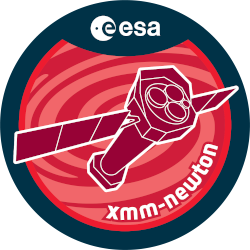

| Proposal ID | 090052 |
| Title | First X-ray examination of a mysterious quasi Wolf-Rayet star |
| Download Data Associated to the proposal | https://nxsa.esac.esa.int/nxsa-sl/servlet/data-action-aio?obsno=0900520101 |
| DOI | https://doi.org/10.57780/esa-gh9gzrm |
| Principal Investigator, PI | Prof Lidia Oskinova |
| Abstract | We propose to use the unmatched sensitivity of XMM-Newton to detect andcharacterize X-ray emission of an enigmatic quasi-Wolf-Rayet star for thefirst time. Thousands members of this important class of post-interactionbinaries are expected to lurk in the Milky Way, but so far only one star waspositively identified -- our target, HD 45166. To advance our understanding oflate stages of binary evolution and of the progenitors of stripped supernovae,the X-ray examination of HD 45166 is urgently needed. We propose a low-riskhigh-gain XMM-Newton study designed to determine X-ray luminosity and measurethe spectral hardness of this important object. With only 17 ks of EPIC time wewill explore a new territory not yet charted in the X-ray . |
| Publications | No publications found for current proposal! |
| Instrument | EMOS1, EMOS2, EPN, OM, RGS1, RGS2 |
| Temporal Coverage | 2022-09-11T18:55:31Z/2022-09-12T00:28:51Z |
| Version | 20.08_20220509_1852 |
| Mission Description | The European Space Agencys (ESA) X-ray Multi-Mirror Mission (XMM-Newton) was launched by an Ariane 504 on December 10th 1999. XMM-Newton is ESAs second cornerstone of the Horizon 2000 Science Programme. It carries 3 high throughput X-ray telescopes with an unprecedented effective area, and an optical monitor, the first flown on a X-ray observatory. The large collecting area and ability to make long uninterrupted exposures provide highly sensitive observations. Since Earths atmosphere blocks out all X-rays, only a telescope in space can detect and study celestial X-ray sources. The XMM-Newton mission is helping scientists to solve a number of cosmic mysteries, ranging from the enigmatic black holes to the origins of the Universe itself. Observing time on XMM-Newton is being made available to the scientific community, applying for observational periods on a competitive basis. |
| Creator Contact | https://www.cosmos.esa.int/web/xmm-newton/xmm-newton-helpdesk |
| Date Published | 2023-09-30T00:00:00Z |
| Last Update | 2025-08-04 |
| Keywords | "XMM", "binary evolution", "late stages", "xray luminosity", "XMM-Newton", "unmatched sensitivity", "spectral hardness", "stripped supernova", "low risk", "xmm newton", "hd 45166", "xray examination", "EPIC", "epic time", "gain xmm newton", "xray emission", "post interaction binary" |
| Publisher And Registrant | European Space Agency |
| Credit Guidelines | European Space Agency, Prof Lidia Oskinova, 2023, 'First X-ray examination of a mysterious quasi Wolf-Rayet star', 20.08_20220509_1852, European Space Agency, https://doi.org/10.57780/esa-gh9gzrm |